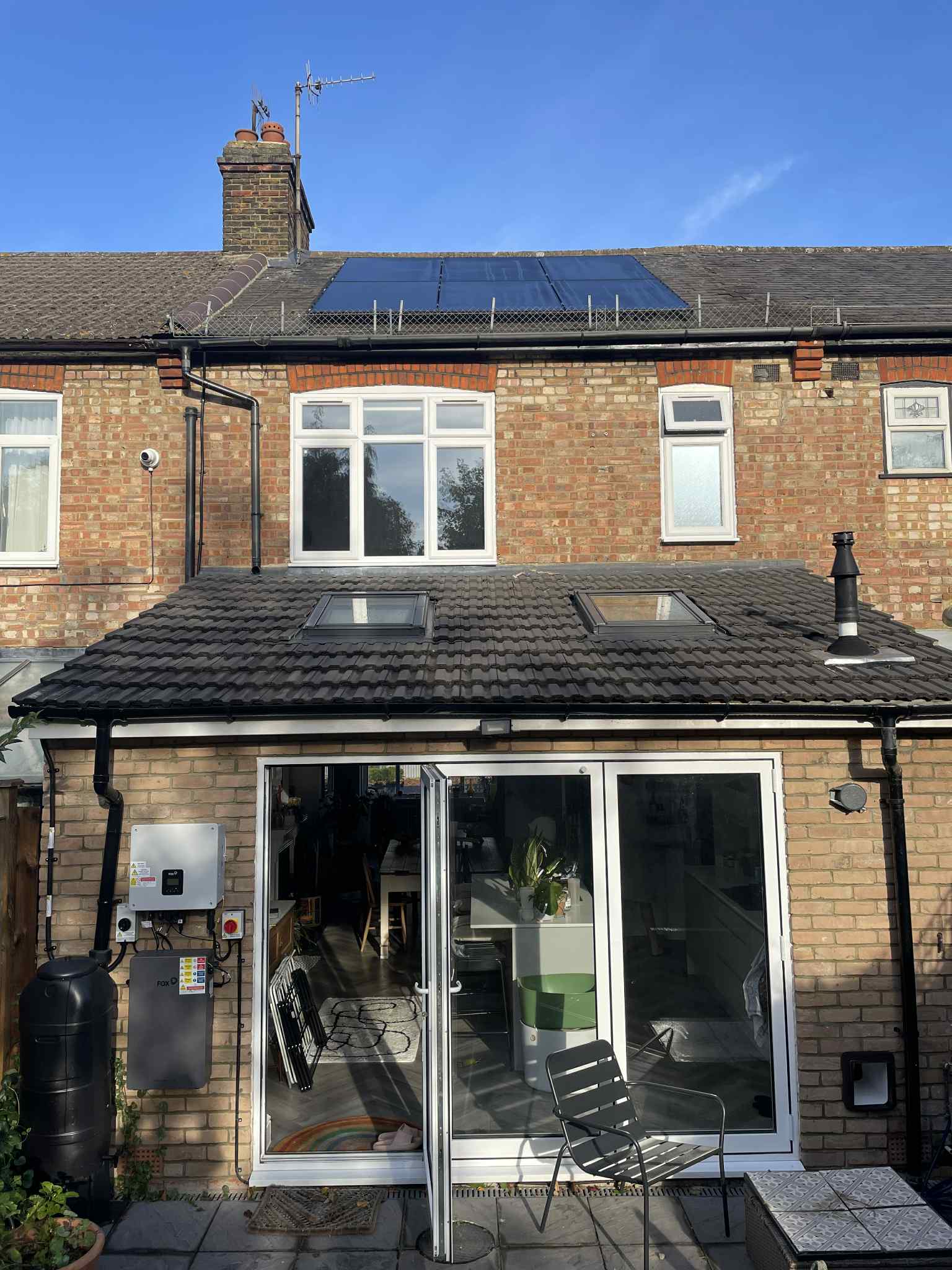‘I had solar panels worth £1,000s installed for free and you may be eligible too – four things I learned’
The solar panels were installed through a government scheme usually for those on benefits, but wealthier households can qualify too


When a letter landed on the doormat telling my girlfriend and I that we might be eligible for energy upgrades to our home, we couldn’t quite believe it.
So much so, we ignored it, and it took a second piece of paper coming through the letterbox for us to investigate further.
Fast forward a few months and we’re the proud owners of a set of solar panels that are slashing our electricity bills and helping the environment – and we didn’t have to spend a penny.
MoneyWeek
Subscribe to MoneyWeek today and get your first six magazine issues absolutely FREE

Sign up to Money Morning
Don't miss the latest investment and personal finances news, market analysis, plus money-saving tips with our free twice-daily newsletter
Don't miss the latest investment and personal finances news, market analysis, plus money-saving tips with our free twice-daily newsletter
How did we manage it? Through the Warm Homes: Local Grant.
The £500 million scheme launched in April this year and is expected to run until March 2028.
Through the scheme, eligible households can get environmentally-friendly upgrades made to their home that also cut energy bills.
This includes wall, loft and underfloor insulation, air source heat pumps, smart controls and solar panels.
To qualify, your home must be in England, privately owned by yourself or a landlord and have an Energy Performance Certificate (EPC) of D, E, F or G.
Your household income must usually be £36,000 a year or under, however you can still qualify if you earn more than this and you live in a certain postcode area or you or another resident are on benefits including Universal Credit, Housing Benefit or Pension Credit. There is an eligibility checker via gov.uk.
My girlfriend and I qualified for free solar panels, which typically cost £8,000 to install in a two-three bedroom home according to Checkatrade, because our EPC rating was D and we live in an eligible postcode. This was despite our joint income breaching the £36,000 threshold.
A team from the local council visited the property to carry out a survey, later telling us we were eligible for solar panels. They were installed just a few weeks later, at the start of October.
It all seemed too good to be true. However, it’s since saved us thousands of pounds in installation costs and ongoing electricity bills.
If you’re considering checking your eligibility, here are four things I learned.
There will be aesthetic drawbacks
Solar panels usually only work alongside a converter and battery. The converter changes up any electricity produced by the panels into the right current to power your home, while the battery stores any electricity the panels produce that’s not immediately needed.
However, installers won’t usually put them in lofts as they can overheat, so they may end up somewhere less than aesthetically pleasing.

Our converter and battery are bolted onto the outside back wall of our home next to the door
Ours, for example, are bolted to the outside wall at the back of the property, and make for a bit of an eyesore.
Wiring is needed to connect your converter and battery to the mains electricity inside your home too. This means we have some exposed trunking in the downstairs toilet.
You may have to rely on the grid
Call me naïve, but I thought it would be possible to rely solely on the solar panels for all our electrical needs, especially as there are just two of us in the property.
But, there have been times when we’ve had to lean on the grid to power the home.
That said, given the panels have only been operational since the first week of October, when it's less sunny, this may change come next spring or summer.
You may have to take time off work
It took four days in total, from getting the survey done to having the panels installed, for all the work to be completed.
The survey took around two hours on one day, and the next visit, on a separate day, to decide where to place the solar panels, converter, battery and any wiring took around an hour.
The third day involved scaffolders setting up, with two other individual teams placing the solar panels on the roof and installing the converter and battery.
A couple of weeks later, the scaffolders returned to pack everything down.
Given this, you may have to take time off work to let the workers in and so you're in the home.
For those that work from home, you can arrange the work to be done for when you're not in the office.
You can track how much you've saved
The electrician who installed the converter and battery helped us get set up on an app, FoxCloud2.0, to track how much electricity the solar panels are producing.
The app also tells you how much electricity your home is using and how much is being channelled from the grid.
Most importantly, it has a “Total Revenue” widget, which shows you how much money you’ve saved since having the panels installed.
We’ve saved almost £40 in roughly a month, equating to £480 a year, although this figure will obviously flex and change based on the time of year.
We also plan to sign up for a new energy tariff with our supplier, Octopus Energy, which will let us sell back any excess electricity produced by the panels and boost our savings.
Other help for driving down energy bills
You may not be eligible for help through the Warm Homes: Local Grant, but there is other support on offer, as the government aims to turn the UK net zero by 2050.
You can currently get up to £7,500 grants towards the cost of a ground or air source heat pump if you live in England or Wales, through the Boiler Upgrade Scheme (BUS).
To qualify for the scheme, you’ll need to own the property where the heat pump is being installed, and must be putting one in to replace a fossil fuel heating system.
Make sure you factor in that you will have to cover any costs that exceed the £7,500 grant.
Supply and installation of an air source heat pump costs between £3,000 and £15,000, according to Checkatrade. Ground source heat pumps cost between £18,000 and £50,000 to supply and install.
Ruth Emery recently revealed the five things she learned from installing a heat pump in her home, after she received a grant through the scheme. She has also examined whether the heat pump has saved her money.
Get the latest financial news, insights and expert analysis from our award-winning MoneyWeek team, to help you understand what really matters when it comes to your finances.

Sam has a background in personal finance writing, having spent more than three years working on the money desk at The Sun.
He has a particular interest and experience covering the housing market, savings and policy.
Sam believes in making personal finance subjects accessible to all, so people can make better decisions with their money.
He studied Hispanic Studies at the University of Nottingham, graduating in 2015.
Outside of work, Sam enjoys reading, cooking, travelling and taking part in the occasional park run!
-
 Boost for over 100,000 families on Child Benefit as new HMRC payment system rolled out
Boost for over 100,000 families on Child Benefit as new HMRC payment system rolled outThousands of households will no longer have to pay the dreaded High Income Child Benefit Charge through self-assessment
-
 Are you being haunted by the ghost of Christmas past? How festive cutbacks could boost your long-term wealth
Are you being haunted by the ghost of Christmas past? How festive cutbacks could boost your long-term wealthThe average family spends around £1,000 over the Christmas season. Here’s how much you could have gained if you had invested some of the money instead.